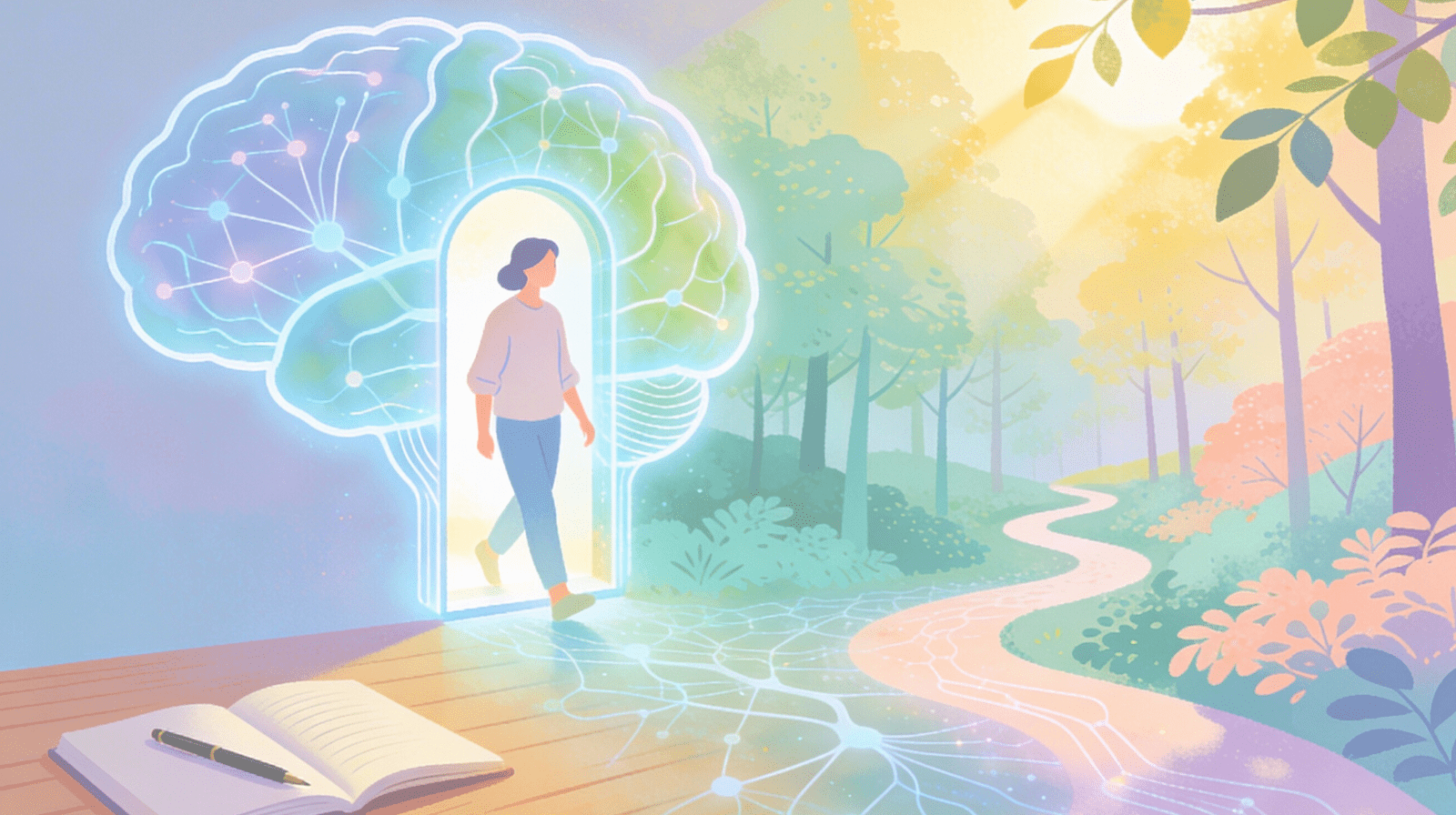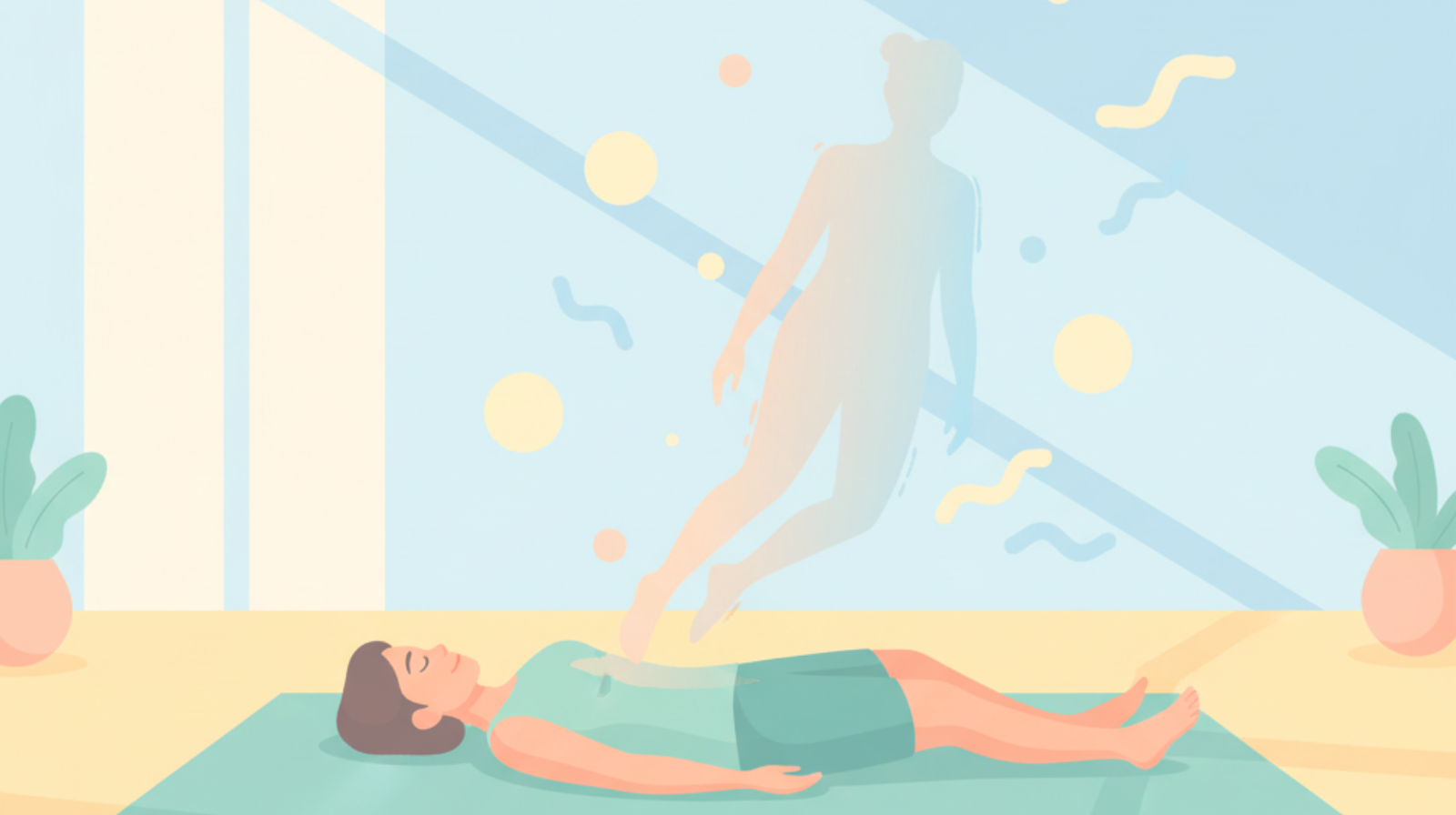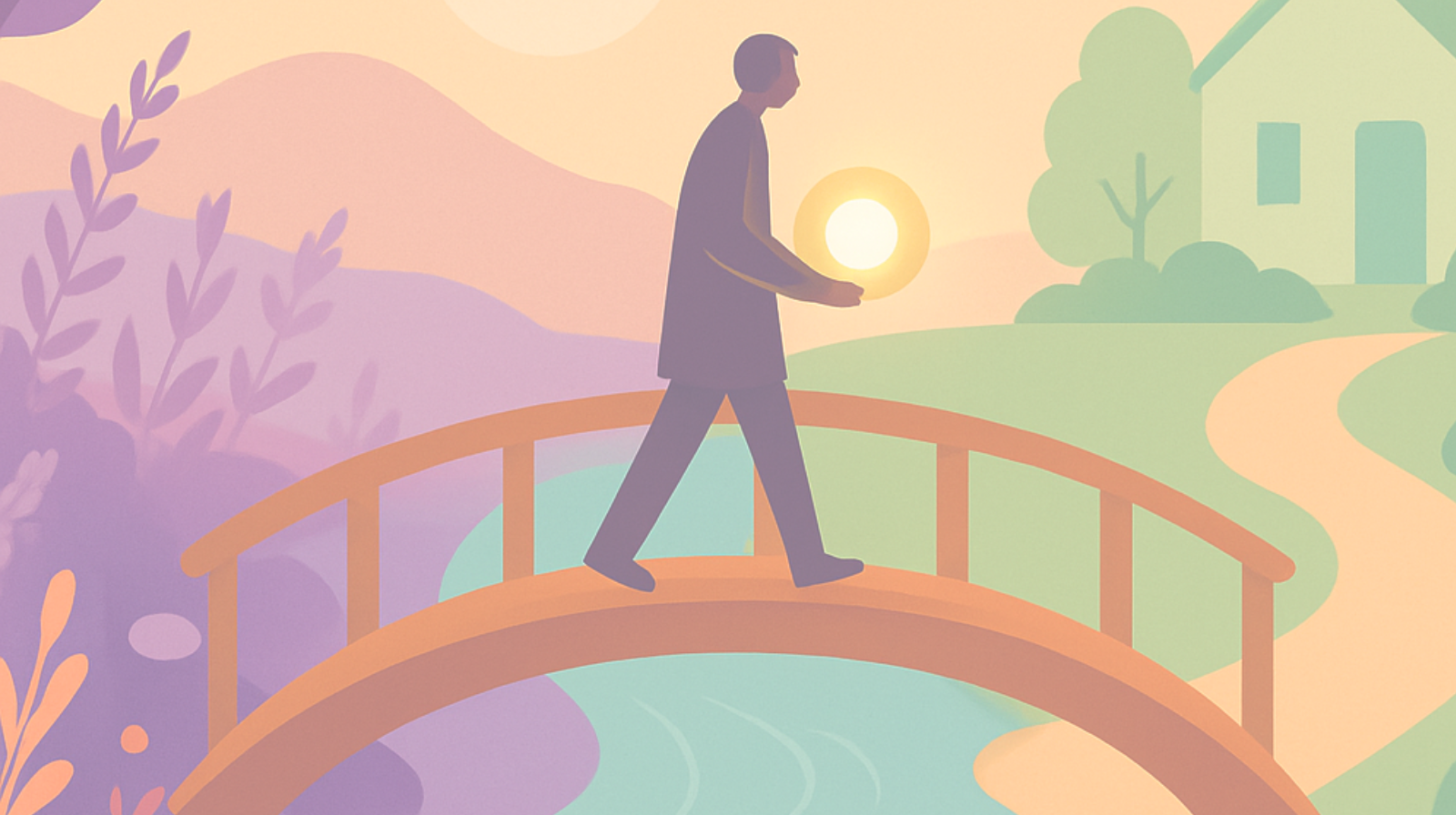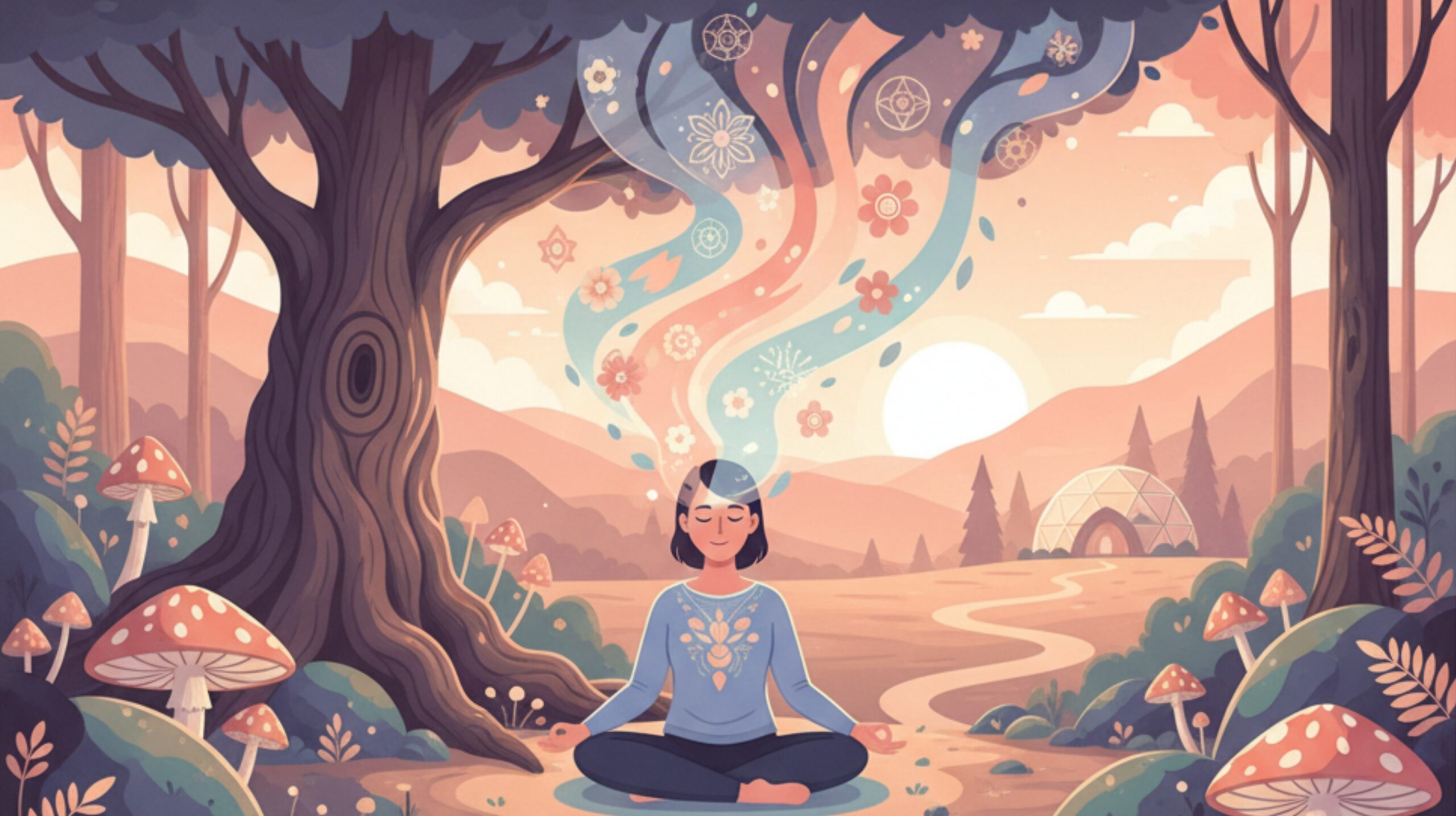
What it Feels Like to Take Psilocybin Mushrooms
The feeling associated with a psychedelic experience defies easy description. When R. Gordon Wasson first introduced psilocybin to Western audiences through his 1957 LIFE magazine article, he described his experience as profoundly spiritual, less a sensory distortion and more of a glimpse into another realm. Since then, psilocybin has inspired a myriad of depictions across literature, film, television, and popular culture, each attempting to capture its ineffable nature.
While the language around psychedelics is often rather elusive and poetic, their effects follow patterns that researchers have spent decades studying. The significance of a psilocybin experience is shaped not just by chance but by a combination of psychological, chemical, and environmental factors that determine how the compound interacts with mind and body.
Shaping the Experience: The Power of Dose, Set, Strain, and Setting
Although there are countless ways a psilocybin journey can unfold, several key factors shape the experience. Much like a song that changes with the instrument, the musician, the mood, and the room in which it is played, a psychedelic journey is influenced by dosage, the strain of the mushroom, the individual’s mindset, and the setting in which it takes place.
Dosage: From Subtle Shifts to Profound Transformations
The psilocybin experience exists on a wide spectrum, from subtle to intensely transformative. A microdose, typically one-tenth of a standard recreational dose, is often used to enhance focus, mood, or creativity without causing hallucinations.
At the other end of the scale lies the “heroic dose,” a term coined by ethnobotanist Terence McKenna to describe a full immersion. Up to 3 grams is considered a standard or ‘social’ dose, while anything above qualifies as a ‘heroic’ dose. At Beckley Retreats, ceremonial doses are adjusted between 2.5 and 10 grams per individual, under the supervision and judgment of expert facilitators.
Between these poles lies a continuum of experiences that can range from euphoric and insightful to deeply challenging, shaped not only by quantity but also by the psychological and physical landscape of the user.
Set: Intentions, Mood, and Headspace
Set, short for “mindset”, refers to the user’s intentions, expectations, and emotional state headed into their journey. And decades of psychedelic research, from Timothy Leary’s early Harvard experiments to modern studies at Johns Hopkins University, have shown how profoundly mindset influences the outcome.
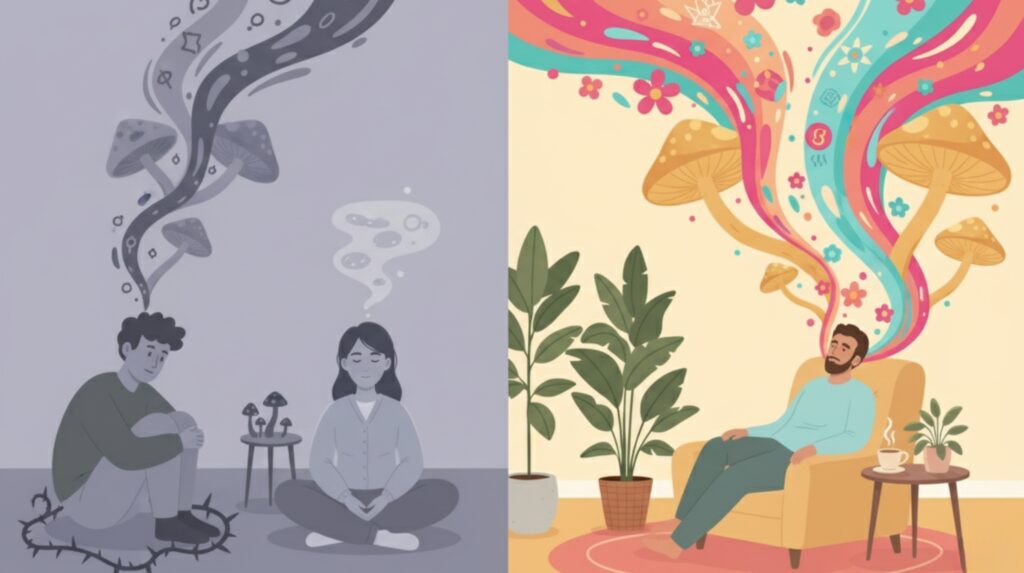
Psychologist Roland Griffiths, who led groundbreaking studies on psilocybin and mystical experience, found that participants who approached the session with openness and curiosity were more likely to report feelings of unity, transcendence, and lasting well-being. Anxiety and resistance, by contrast, can heighten discomfort and confusion.
Strain: The Character of the Mushroom
More than 200 species of mushrooms contain psilocybin, each with distinct chemical compositions and potency levels. Among cultivated varieties, Psilocybe cubensis is the most common, but even within that species, strains can produce subtly different effects.
Variations in psilocybin, psilocin, and baeocystin levels can alter both the intensity and emotional tone, with some strains being described as softer, more visual, or more introspective. Although scientific data comparing strains is limited, anecdotal reports and lab analyses suggest that chemistry and cultivation conditions can meaningfully influence the experience.
Strain selection is carefully managed at Beckley Retreats. Using trusted local providers, facilitators match the strain to the group and the intended nature of the experience, prioritizing safety and consistency.
Setting: The Impact of Space and Companions
If mindset is the inner landscape, setting is the outer one. It is the physical, social and sensory environment in which the experience unfolds. Clinical research consistently shows that a supportive setting can make the difference between a visionary journey and a difficult one.
In therapeutic studies, participants are guided by trained facilitators in comfortable rooms designed to evoke a sense of safety and nurturing. Outside the lab, the same principle applies. A serene natural environment, trusted companions, and a sense of privacy help the user stay calm and open.
As journalist Michael Pollan observes in How to Change Your Mind, “Everything depends on context, on where you are, who you’re with, and what you expect.” In other words, the mushrooms are only part of the story. The rest is the world you build around them.
The Journey Begins
The onset of psilocybin’s effects is usually gradual. Most users begin to feel subtle changes between 15 minutes and one hour after ingestion, depending on how quickly it metabolizes, whether the mushrooms are consumed on an empty stomach, and the form in which they are taken.
Mushrooms may be eaten whole or ground into capsules, while extracts and infused beverages can offer a gentler or faster experience. At Beckley Retreats, participants are offered psilocybin in a citrus-infused tea, which can ease digestion while also masking the earthy taste, helping the journey unfold smoothly from the first moments.
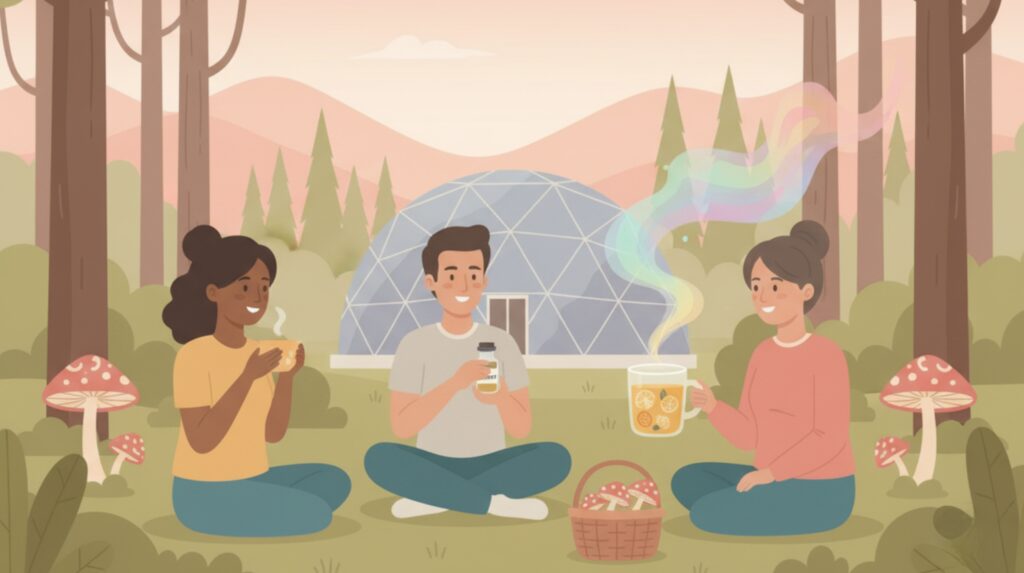
The first sensations are often described as a soft unfolding. Colours look richer, sounds are more resonant, and the boundaries of self begin to blur. For some, it is a gentle shift in perception. For others, a sudden wave announces itself with physical tingling or a rush of energy.
Researcher Dr. Robin Carhart-Harris notes that the early phase of the trip often correlates with the brain’s default mode network beginning to quiet, creating space for new connections and sensory patterns to emerge. Simply put, psilocybin (the psychedelic compound in mushrooms and truffles) changes the way different regions of the brain communicate.
The so-called “body load” refers to the physical sensations accompanying the come-up. These can range from light pressure in the stomach to a fluttering in the chest or a sense of energy coursing through the body. Some people feel brief nausea or a need to lie down. Others experience an almost euphoric lightness, an urge to move, or waves of warmth.
The Peak Of The Journey
At its height, a psilocybin journey can be dazzling, profound, and sometimes overwhelming. The peak typically arrives between one and two hours after ingestion, and usually lasts for two to three hours. Yet it is rarely a single sustained crescendo.
Instead, the experience tends to move in waves, each bringing new insight or intensity before easing into calm. Visually, the world can seem alive. Colours pulse with vibrancy, patterns ripple across familiar surfaces, and closed eyes reveal vast shifting geometries that can be either completely alien or deeply personal.
Emotionally, psilocybin often amplifies what lies beneath the surface. Joy, awe, grief and love can arrive in torrents, sometimes all at once. Studies at Johns Hopkins University have found that such moments often rank among the most meaningful of participants’ lives, producing enduring shifts in mood, perspective, and purpose.
And of course, beyond the cognitive and emotional lies the mystical. Boundaries between self and world, time and space dissolve. Many speak of encountering something vast, benevolent, and beyond comprehension. Philosopher William James called this the “noetic quality” of mystical experience, the feeling that what is revealed is not fantasy, but truth.
The peak is rarely linear. It swells and recedes, serene one moment and chaotic the next. For some, this phase brings ecstasy, but for others it can bring confrontation. There is no way of knowing in advance which threads of experience will unfold, or how fully they will unfold.
The Descent
After roughly four to six hours, the intensity begins to ebb and the external world slowly reasserts itself. This phase is usually calm and introspective. Some feel deep gratitude or exhaustion, while others experience a quiet melancholy as their mind adjusts back to its usual patterns. It is often described as a return and reforming of the self, when the brain’s default mode network resumes its normal hierarchy, restoring the sense of ego and identity. Gentle grounding through food, rest, conversation, or solitude can help ease this transition.
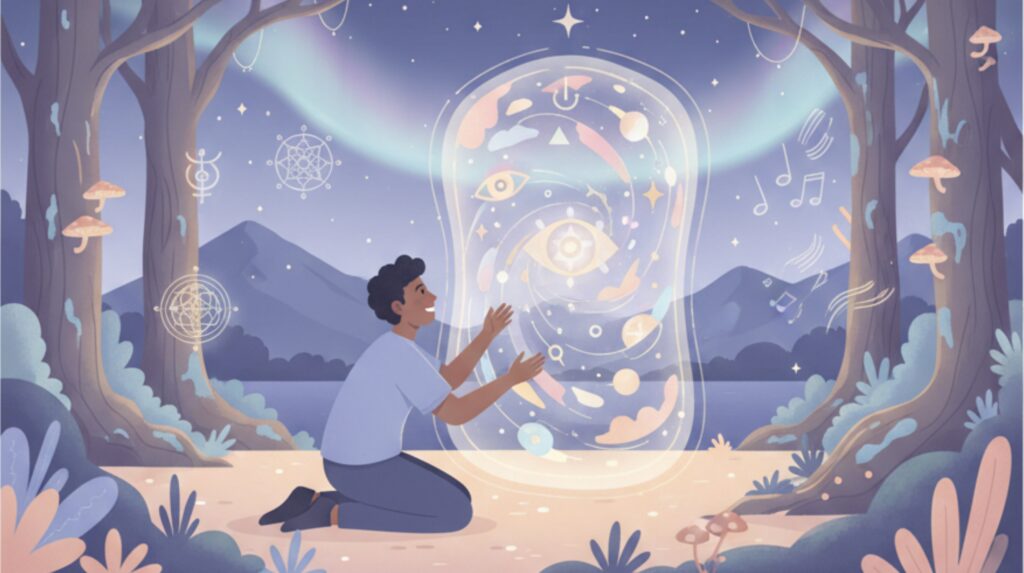
In the hours or days that follow, many report what researchers call the ‘afterglow’, which is a period of heightened mood, clarity, and openness that can last for days or even weeks. Studies have shown sustained increases in well-being, empathy, and life satisfaction after a single guided psilocybin session.
The Value of Preparation, Support, and Integration
At Beckley Retreats, preparation and integration are seen as essential parts of the journey, not just the edges that frame it. Each participant is supported before, during, and after their experience, ensuring that whatever arises – whether joy, discomfort, or profound reflection – has space to unfold safely. The retreat model combines evidence-based preparation, guided ceremony, and structured integration to help participants understand and apply what they learn.
Even when the journey is demanding or challenging, there is value in it. With the right support, every insight can become a step toward greater clarity, connection, and self-awareness. Beckley Retreats helps ensure that these moments do not fade as memories but become part of a lasting process of transformation.
Frequently Asked Questions
What are the physical effects of psilocybin?
Psilocybin can cause changes in heart rate, blood pressure, and body temperature, along with pupil dilation, muscle relaxation, and mild nausea. Some users also report a feeling of lightness or body warmth.
How long does a mushroom trip typically last?
A psilocybin experience usually lasts 4 to 6 hours, with effects starting 15 to 60 minutes after ingestion and peaking around the two-hour mark.
Can you have a “bad trip” on mushrooms?
Yes. Difficult or challenging experiences can occur, often triggered by high doses, anxiety, or an unsettling environment. These can involve fear, confusion, or emotional discomfort but typically subside as the effects wear off.
What do visuals on mushrooms actually look like?
Visuals often include intensified colors, shifting patterns, or geometric shapes. At higher doses, complex imagery or scenes may appear with eyes closed.
How does dose affect the mushroom experience?
Lower doses may enhance mood and perception, while higher doses can produce strong visual, emotional, and spiritual effects. The intensity and duration increase proportionally with dose.
Sources
- Carhart-Harris, R. L., Bolstridge, M., Rucker, J., Day, C. M. J., Erritzoe, D., Kaelen, M., Bloomfield, M., Rickard, J. A., Forbes, B., Feilding, A., Taylor, D., Pilling, S., Curran, V. H., & Nutt, D. J. (2016). Psilocybin with psychological support for treatment-resistant depression: An open-label feasibility study. The Lancet Psychiatry, 3(7), 619–627. https://www.imperial.ac.uk/news/182410/magic-mushrooms-reset-brains-depressed-patients/
- Gilman, I. Y., & Shields, K. I. (2022, February 19). At Harvard, psychedelic drugs’ tentative renaissance. The Harvard Crimson. https://www.thecrimson.com/article/2022/2/19/psychedelics-tentative-renaissance/
- Griffiths, R. R., Richards, W. A., Johnson, M. W., McCann, U. D., & Jesse, R. (2008). Mystical-type experiences occasioned by psilocybin mediate the attribution of personal meaning and spiritual significance 14 months later. Journal of Psychopharmacology, 22(6), 621–632. https://doi.org/10.1177/0269881108094300
- Pollan, M. (2018). How to change your mind: What the new science of psychedelics teaches us about consciousness, dying, addiction, depression, and transcendence. Penguin Press. https://michaelpollan.com/books/how-to-change-your-mind/
- Sanderson, M. (2024, November 21). William James on mystical experience. 1000-Word Philosophy: An Introductory Anthology. https://1000wordphilosophy.com/2024/11/21/james-mystical-experience/
- Torres-Ferreras, P., & Ortiz-Tallo, M. (2014). Pre-Columbian use of psychoactive substances and its influence on modern clinical practice. Adicciones, 26(3), 227–234. https://www.sciencedirect.com/science/article/pii/S2173580814001527
